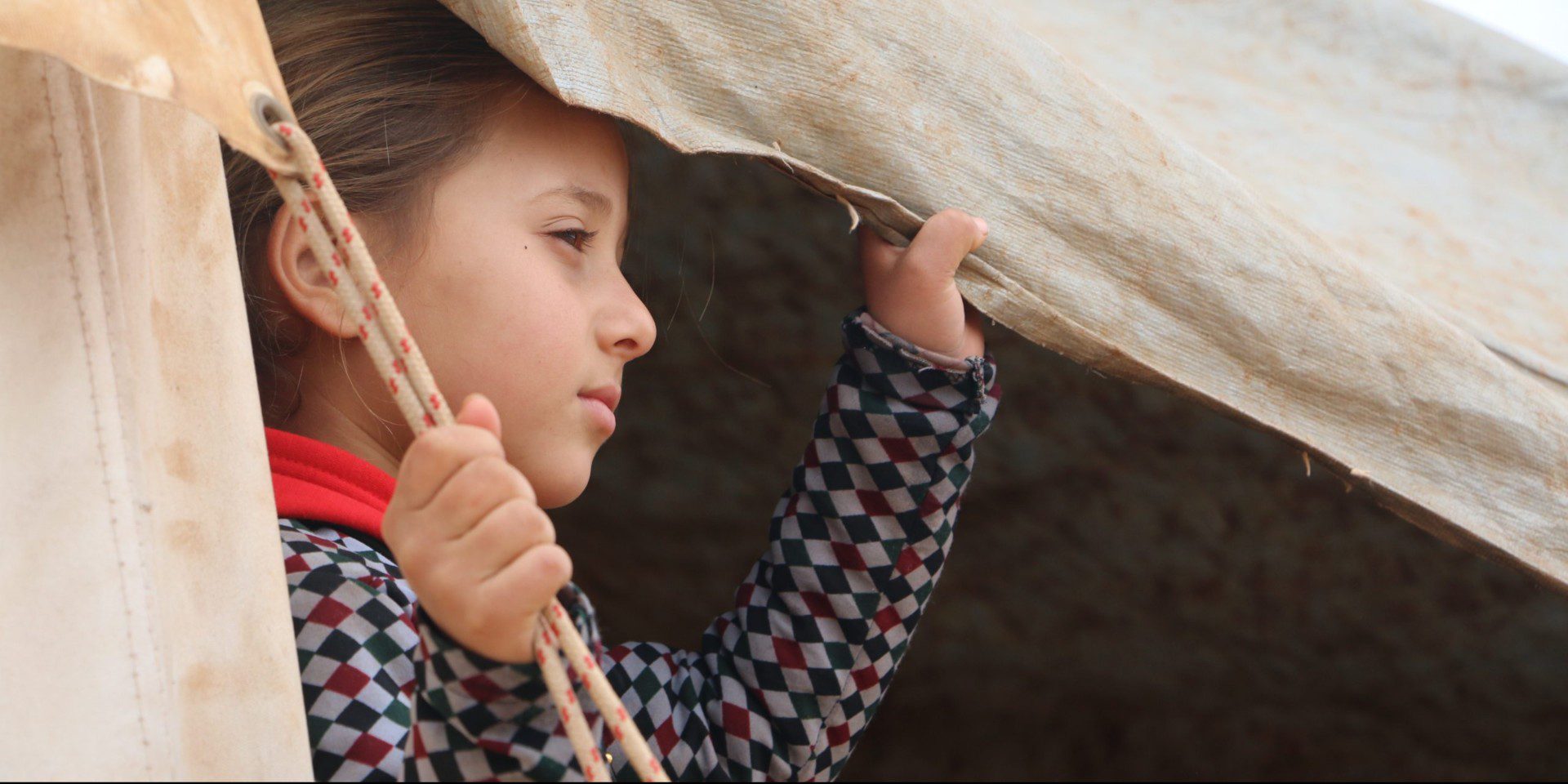No country for children: The impact of ten years of war on childhood in Syria
Ten years of conflict have taken their toll on Syrian children, 80 percent of whom see themselves living outside the country in the future.
16 March 2021
AMMAN — Most Syrian children born after the revolution, whose tenth anniversary falls this week, are still too young to understand the event that changed the direction of their lives. Millions have seen the better part of their childhood tainted by war.
Ten years after the revolution, several reports by international organizations shed light on the toll of the conflict on children in Syria and their aspirations for the future.
A lost generation?
A majority of Syrian children are growing up in a stifling environment due to the ongoing conflict. Nearly 90 percent of children living in Syria need humanitarian assistance, a 20 percent increase in the past year alone. According to UNICEF, there are 2.5 million children registered as refugees in neighboring countries and three million children displaced inside Syria.
One of the most worrisome trends of the conflict is the rising food insecurity across the country, whose impact on children may be irreversible. An estimated 6.2 million children are going without enough food, and over half a million under the age of five suffer from stunting as a result of chronic malnutrition.
Another long-lasting impact is the widespread lack of access to education both inside and outside Syria. According to UNICEF, 2.45 million children in Syria and 750,000 Syrian children in neighboring countries are out of school. Hundreds of schools have been destroyed by the conflict, with 157 attacks on schools in 2019.

A photo shows the destruction inflicted on a primary school in the then opposition-controlled Hujjaira in Reef Dimashq province, 8/1/2016 (UNICEF)
No future in Syria
The overwhelming majority of Syrian children cannot imagine a future in their country, according to a report by Save the Children, based on interviews with over 1,900 displaced children aged 13 to 17 and their caregivers in Syria, Jordan, Turkey, Lebanon and the Netherlands.
When asked where they would like to live in two years, nearly 80 percent of the children interviewed see themselves living somewhere other than Syria.
On average, 86 percent of Syrian refugee children told the INGO they would not want to return to Syria. While only 9 percent of Syrian refugee children in Jordan and the Netherlands want to return to Syria, this figure rises to 29 percent for Syrian refugee children in Lebanon. In the wake of Lebanon’s economic collapse, Syrian refugees face growing economic hardship and increasing pressure to return.
When asked where they would like to live in two years, nearly 80 percent of the children interviewed see themselves living somewhere other than Syria. The children associated life there with everyday violence, particularly girls, who frequently spoke about the need to end gender-based violence such as harassment in the street.

A Syrian family on the road to escape the conflict. 6.5 million Syrians are displaced internally, and 5.6 million have sought refuge abroad, 23/6/2012 (UNICEF)
A sense of belonging
“Whether inside or outside Syria, children affected by this conflict are still struggling to feel at home where they are,” Jeremy Stoner, Save the Children’s Regional Director for the Middle East and Eastern Europe, highlighted in a press briefing.
Asked to adapt to a new language, culture and living environment, many children are struggling to form an identity. “You are not a Dutch person here. You really have to learn a lot and you have to have knowledge of the Dutch culture,” Amina (a pseudonym), a 14-year-old refugee in the Netherlands, told Save the Children.
Meanwhile, the children’s ties to Syria are fading. “My biggest fear? Yeah, it was leaving everyone behind, everyone that you might forget. Not having an identity there anymore,” Amina added.
Discrimination against refugees also affects children, sometimes further limiting their access to education. Some children said they were not able to play with non-Syrian children.
The feeling of “not belonging” is even stronger for those still inside Syria, who most frequently said they experience discrimination. Despite being in their home country, they struggle to feel integrated and accepted – a finding that reflects the dislocation of the Syrian social fabric throughout the course of the conflict.

Boys play with kites in the Kawergosk camp for Syrian refugees, west of Erbil, the capital of Iraq Kurdistan Region, 5/11/2013 (UNICEF)
Ten years on, no change is in sight, and many Syrian children face the prospect of entering adulthood without ever having known their country at peace.
One generation ahead, millions of young Syrians aged 18-25 are already paying the price of the past brutal decade. A report by the International Committee of the Red Cross (ICRC) paints a dire picture of a generation marked by loss. Almost 50 percent of those surveyed had lost a close relative or friend in the conflict, while 12 percent had themselves been injured. A majority reported experiencing sleep disorders, anxiety, depression, solitude, frustration or distress over the past year.
“This ten-year war has cost Syria’s young people their childhoods, but the world should not allow it to rob them of their future,” Stoner stressed, highlighting the need for greater political commitments to improve the fate of children, including in European countries where many children risk “aging out” of protection systems.
Meanwhile, UNICEF appealed $1.4 billion to fund the 2021 humanitarian response inside Syria and neighboring countries. “There are no winners in this war and the biggest loss is brought upon Syria’s children,” the organization warned.







